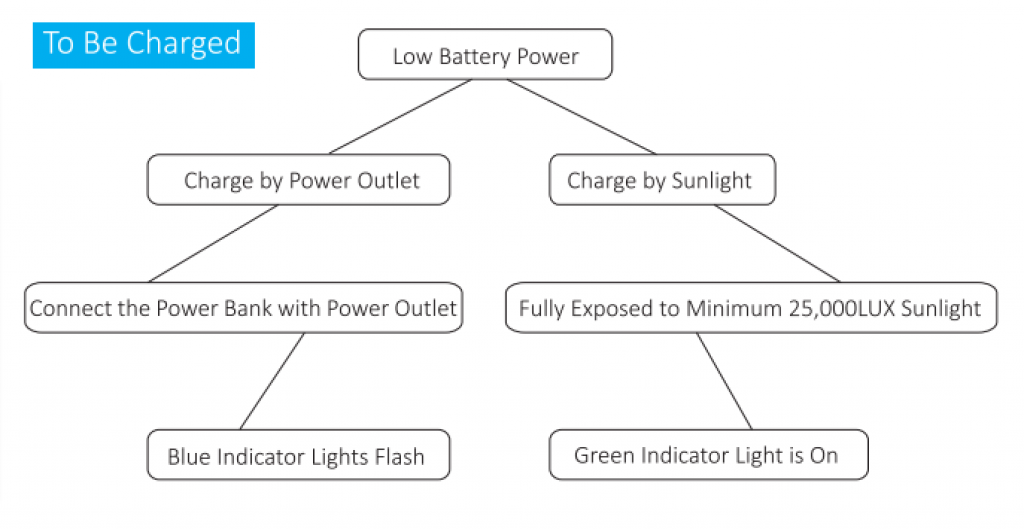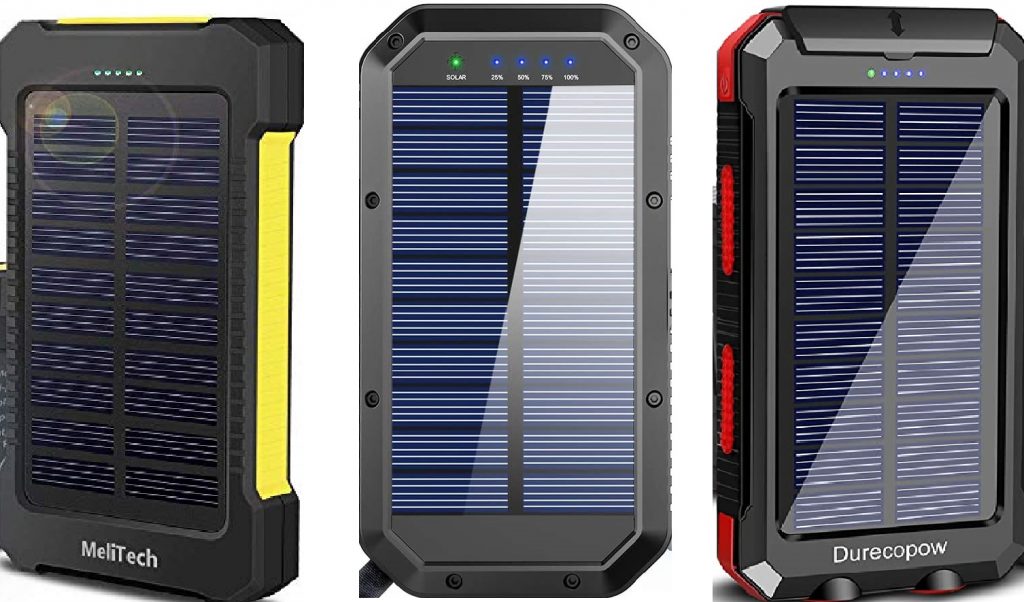Are you an outdoor enthusiast who relies on a solar power bank for your adventures? Maybe you have a power bank as a reliable backup for emergencies? Either way, discovering that your solar power bank isn’t charging can be a frustrating experience.
In this post, we discuss five possible reasons behind solar power bank charging issues and provide practical solutions to help you troubleshoot and fix each problem.
By following these tips, you can ensure that your solar power bank is always ready to charge your devices, no matter where you are or what situation you’re facing.
Table of Contents
5 Reasons your solar power bank is not charging
There are many reasons why your solar power bank might not be charging. Here are the five most common ones:
1. The battery has reached the end of its life
Unfortunately, no battery lasts forever. It’s inevitable that it’ll reach the end of its lifespan after performing a certain number of cycles.
If you’ve had your solar power bank for some time, your battery might have lost its ability to hold a charge.
2. You’re not using it properly
Although technically, you use your solar power bank while it’s charging (in an emergency, for instance), this practice isn’t recommended. Doing so frequently may result in your solar power bank not charging or charging erratically.
When you do this, the power banks’ battery is in line (or in series) with the gadget. The result is a higher power draw which leads to excessive heating that can damage your battery.
3. Your solar panel isn’t getting enough sunlight
A common misconception is that the solar panel in your solar power bank can generate electricity on a hot day, even when placed in the shade. That is not true — solar panels require direct sunlight to work effectively.
Additionally, solar power banks require a minimum amount of luminous flux per area unit (also called lux). If they don’t receive the minimum amount of lux, they won’t start charging via solar.
The following image showing the charging instructions of a standard solar power bank serves as an example.

Notice that it requires a minimum of 25,000 LUX sunlight to charge via solar.
4. Wrong or broken charger/power cable
If you’re trying to charge your solar power bank using a USB charger and it isn’t charging, the issue might not be your power bank. It could instead be the charger or the cable.
Make sure you’re using the correct charger, one that delivers the proper voltage and current (as required by your solar power bank).
If it still doesn’t work, the charger (or just its power cable) could be broken.
5. Excessive battery drainage
We recommend that you recharge your solar power bank before you drain it completely. If you drain your power bank completely, it’ll require more energy to get going again instead of charging it from a 50% state of charge.
As a result, if you deplete your solar power bank entirely, it might take even longer to charge with solar, or in a worst-case scenario, it might not charge at all.
Related reading: How To Use A Solar Power Bank – A Helpful Guide
How do I know if my solar power bank is charging?
Charge your power bank properly. Doing this ensures that it provides you with power when you need it.
Led indicators
Most Solar Power Banks on the market have four tiny LED indicators that flash progressively when charging. Although they may vary in size and color, you can quickly identify them on your Solar Power Bank.

Source: amazon.com
Advanced models display different LED colors to indicate the charging source. After reading the User Manual from a few different Solar Power Bank models, we’ve noticed that for most models:
- Blue LED: Indicates USB port charging
- Green LED: Indicates solar charging
Furthermore, the LEDs indicate the state of charge when the solar power bank isn’t charging (and the LEDs aren’t flashing). In this case, the lights represent:
- 1 LED on = 25% state of charge
- 2 LEDs on = 50% state of charge
- 3 LEDs on = 75% state of charge
- 4 LEDs on = 95%-100% state of charge
Logically, when fully charged, your solar power bank should have its 4 LED Indicators active. As it discharges, the indicators gradually turn off.
Because of the variety of models, you might find yourself with a device that indicates charging differently than the way we described.
For this reason, we strongly advise that you read your device’s user manual. There, you’ll find all the information you need, specific to your solar power bank model.
5 Ways to fix a solar power bank that won’t charge
If your solar power bank isn’t charging, don’t panic! Here are a few things you can try to get it up and running again:
1. Add extra solar panels
If you’re trying to charge your power bank with solar energy after draining it completely, it may not charge at all.
Why? The surface area of your power bank’s solar panel might be too small to generate enough electricity to get the redox reactions in the battery going.
In this case, adding extra solar panels might fix the problem. You can attach/connect small solar panels to your solar power bank (if it supports this addition) – you can easily find them online.
This will increase the solar input of your power bank until it recharges to at least 50%. After this point, the electricity generated by your main solar panel (without the extra ones) will probably be enough to continue charging your power bank.
2. Try charging it with electricity from a wall outlet
As mentioned above, your power bank might be too drained to start recharging only with the small energy input the solar panel provides. If this happens, don’t give up on your solar power bank just yet. Pumping up some juice from a wall outlet might bring it back to life.
3. Place it in direct sunlight for an extended period
Solar Power Banks can take over 50 hours to recharge using solar energy. Considering how many hours of sunlight are in a day, it could take an entire week to recharge your solar power bank.
For this reason, it may seem like it isn’t charging, when in reality, it’s just taking a long time.
To maximize sunlight absorption and overall efficiency, one way of speeding up this process is to place your solar power bank in direct sunlight for an extended period.
4. Check for any loose connections
A more elaborate way to fix your solar power bank requires some skills. If you have previous experience repairing electronics, you could try opening your solar power bank to check for any fraying or loose connections.
For instance, your solar power bank might not be charging because the wire that connects the solar panel to the circuit board is loose.
In this case, using a soldering iron to solder the loose wire will fix the broken.
5. Check if the battery is dead
This one also requires exposing the inner pieces of your solar power bank.
Depending on the battery’s chemistry (and its nominal voltage), you can tell if it’s dead by using a voltmeter to check its voltage.
If you conclude that it’s dead, the only way to fix your solar power bank would be to replace the battery. This procedure might not be cost-effective, so do your research before buying a replacement battery.
Here’s a little tip: You can also use the voltmeter to measure the output voltage of the solar panel. Maybe the battery is fine, but the solar panel isn’t generating any electricity.
If you’ve exhausted all your options, and cannot find a way to fix your solar power bank, it’s time to invest in a new one.
This video from Bushcraft Zone discusses the top solar power banks you’ll find on the market:
Final thoughts
Solar Power Banks are amazing devices that can harness the sun’s energy to provide off-grid power. They can come in handy during camping trips, charging your camera’s battery after a long day taking beautiful pictures, for instance.
Therefore, to take advantage of this solar charging feature, it’s essential to make sure your solar power bank is charging correctly, so it doesn’t catch you by surprise when you need it the most.
Moreover, if your solar power bank stops working, knowing how to fix it can potentially save you a lot of time and money.
In closing, this article went over some of the most common causes and solutions for solar power banks not charging. So whether you’re on a hike or just out and about, you’ll know what to do if your solar power bank isn’t charging.

